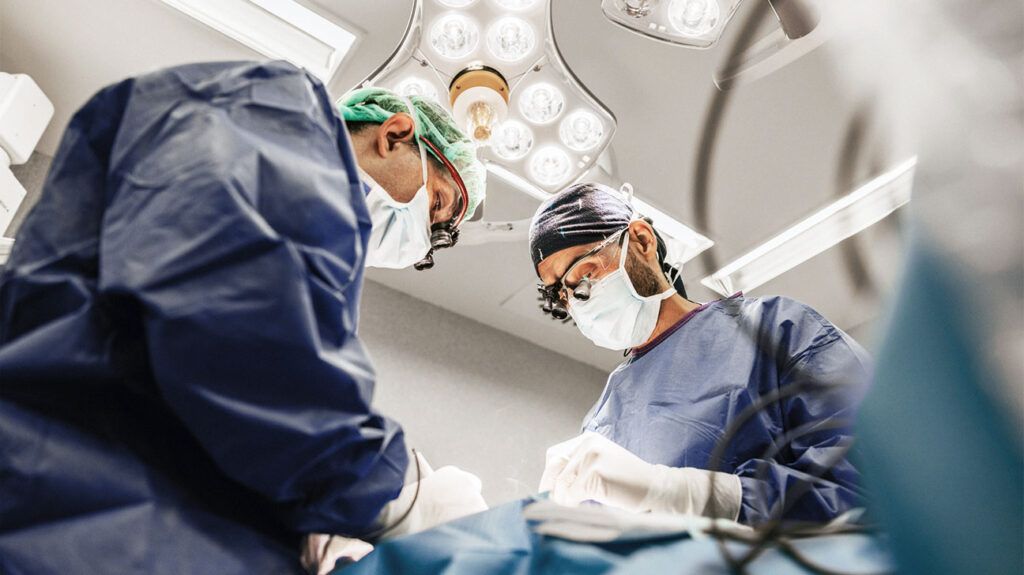Acquired hemophilia refers to a condition someone develops later in life that affects their blood clotting ability. This can lead to spontaneous bleeding, particularly after an injury or during surgery.
Hemophilia is a bleeding disorder that prevents the blood from clotting correctly. This can cause a person to bleed spontaneously for prolonged periods. Excess bleeding may also occur during surgery or following trauma to an area of the body.
Acquired hemophilia is an autoimmune condition. It can develop due to the body producing antibodies that prevent the blood from clotting correctly.
In this article, we will discuss acquired hemophilia, how it differs from hereditary hemophilia, symptoms, causes, treatment, and more.

Acquired hemophilia describes an
An autoimmune condition is when the body produces antibodies that mistakenly attack healthy cells in the body. Acquired hemophilia occurs when the body produces antibodies that attack proteins, or coagulation factors, in the blood that help clots form.
This results in the blood no longer clotting properly. This can lead to excessive bleeding, which can present in the form of:
- nosebleeds
- internal bruising
- solid masses of clotted blood
- blood in the urine
- bleeding in the digestive system
- blood in the genital organs
A person with hemophilia will typically have low levels of blood clotting factors, such as factor VIII or factor IX, in the blood. Low levels of these proteins may prevent blood clots from forming, which can lead to spontaneous bleeding.
Hereditary hemophilia is when a person inherits alterations of the genes responsible for producing these blood clotting factors. These gene variations do not typically produce enough blood clotting proteins to form blood clots. Some types of hereditary hemophilia include:
Acquired hemophilia can occur when the body produces antibodies that attack the blood-clotting proteins. Therefore, the body does not produce enough protein to form blood clots.
Hereditary hemophilia is more likely to affect males than females due to the type of chromosomes a male person is born with. Evidence suggests that hereditary hemophilia affects approximately
A person with hereditary hemophilia is typically born with the condition. However, acquired hemophilia usually develops as a person gets older. A
Acquired hemophilia is
Read on to learn more about the inheritance pattern of hereditary hemophilia.
The most common symptom of acquired hemophilia is bruising underneath the skin. Other symptoms can include:
- nose bleeds
- bleeding after vaccinations
- bleeding in the mouth and gums
- bleeding in the muscles
- bleeding in the digestive organs
- bleeding in the urinary and genital organs
- bleeding in the brain
- blood in urine or stool
- heavy genital bleeding after giving birth
Research suggests that in approximately 50% of people with acquired hemophilia, there are no identifiable causes. In the other 50%, causes and risk factors of acquired hemophilia can include:
- an underlying autoimmune condition such as lupus, rheumatoid arthritis, and multiple sclerosis
- health conditions such as inflammatory bowel disease, diabetes, and hepatitis
- contracting an infection
- blood cancer or some cancerous tumors
- reactions to medications such as penicillin and interferon
- pregnancy or giving birth
To diagnose acquired hemophilia, a doctor
If symptoms of acquired hemophilia, such as bruising, are present, a doctor may take a blood sample to test if the blood is clotting correctly.
Further laboratory tests can determine if a person has issues with their blood clotting proteins and if the antibodies attacking those proteins are present. If this is the case, a doctor may confirm a diagnosis of acquired hemophilia.
Acquired hemophilia is a rare condition that affects approximately
Some common treatments can include:
- treating any underlying health conditions
- anti-hemorrhagic medications to control bleeding, such as bypassing agents
- immunosuppression therapy, such as corticosteroids
Acquired hemophilia is a serious condition. Approximately
Research suggests that acquired hemophilia can lead to fatality in approximately
Survival rate may decrease if a person does not receive appropriate treatment, receives a late diagnosis, or experiences severe bleeding during a surgical procedure.
Acquired hemophilia is a rare bleeding disorder and autoimmune condition that can cause spontaneous bleeding. This is due to antibodies mistakenly attacking certain proteins in the body that stop the blood from clotting correctly.
When the blood does not clot correctly, it can lead to sudden and prolonged internal and external bleeding, such as nose bleeds, bruising under the skin, and bleeding in various organs. A person with acquired hemophilia may also experience severe bleeding following an injury or during a surgical procedure.
Hereditary hemophilia can occur when a person inherits certain gene alterations from their parents. Acquired hemophilia can occur when a health condition causes the body to produce certain antibodies that attack clotting factors.
